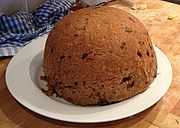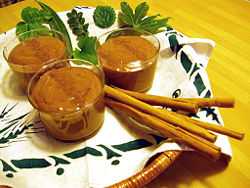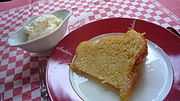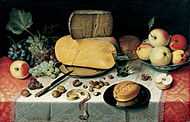Not to be confused with
desert.
| Dessert |
|---|
|
.jpg)
|
| Type |
Usually sweet |
|---|
| Variations |
Numerous (biscuits, cakes, tarts, cookies, gelatins, ice creams, pastries, pies, puddings, custards, and sweet soups, etc.) |
|---|
 Cookbook:Dessert Cookbook:Dessert  Dessert Dessert |
Dessert (//) is a typically sweet course that concludes an evening meal. The course usually consists of sweet foods, but may include other items.
In world cultures there are a wide variety of desserts including cakes, tarts, cookies, biscuits, gelatins, pastries, ice creams, pies, puddings, custards, and sweet soups. Fruit is also commonly found in dessert courses because of its naturally occurring sweetness.
Many different cultures have their own variations of similar desserts around the world, such as in Russia, where many breakfast foods such as blint, oladi, and syrniki can be served with honey and jam to make them popular as desserts. The loosely defined course called dessert can apply to many foods.[1]
Etymology
The word "dessert" originated from the French word desservir "to clean the table" and the negative of the Latin word servire.[2]
Usage
The word dessert is most commonly used for this course in the United States, Canada, Australia, New Zealand the United Kingdom and Ireland, while "sweets" or "afters" or, informally, "pudding" are alternative terms that may also be used in the United Kingdom and some other Commonwealth countries, including Hong Kong, and India.[3]
History

This is an ice cream parlor in 1910.
Desserts were first made using natural ingredients that were locally available.[1] In ancient civilizations people enjoyed dried fruits, honeycomb, or nuts.[1] These were considered the first candies. When sugar began to be manufactured in the Middle Ages more sweet desserts became available. Even then sugar was so expensive usually only the wealthy could indulge on special occasions. Ice cream can be dated back to 3000BC and may be considered to be an early “dessert” in the modern sense of the word. The first apple pie recipe was printed in 1381. Also in 1740 the first cupcake recipes were recorded. Ice cream was a Chinese invention although Marco Polo expanded the technique to Europe in his travels. By the 1800s, recipes for how to make ice cream were very popular. Vanilla also plays a large role in many desserts including ice cream. Vanilla was mostly grown in Mexico where they discovered if the vanilla pod was picked and dried then vanillin was produced which can be sweetened into a dessert on its own.[1]
Desserts are constantly changing with the new techniques and ingredients available at the time or in the local area. They have changed from natural candies and nuts to complex souffles and multi-layered cakes. The ingredients available affect the range of desserts that can be made in each region. The first desserts required minimal effort or preparation since ancient cultures were more focused on the nutrition in foods in order to survive. Now, however, modern day cultures have more options in the desserts available. Ice Cream went from being a shaved ice substance with flavoring to the dairy based, sweet treat modern children crave. Desserts also went through a major change in manufacturing. The Industrial Revolution in America and Europe changed desserts (and food in general) because they began to be mass-produced, processed, preserved, canned, and packaged. The iconic foods soon became a staple in many households because of their availability. Frozen foods became very popular starting in the 1920s when freezing emerged. Also around the 1920s lunch counters and fast food restaurants were established with increasing popularity. These processed foods became a huge part of diets in many industrialized nations. Food has always varied with each culture and area, and, despite the boom in mass-produced processed desserts, they have still represented regional and ethnic cultures. Many countries have desserts and foods distinctive to their nations or region.[4] One example of this is the churro historically from Spain. These sticks of dough are now deep fried. They are available all throughout North and South America along with many other areas. They started with Spanish shepherds as a substitute for bread. Now they have been passed through generations and cultures and changed to a sweet confection different for each culture.[5]
Ingredients

Spices can vary the taste of desserts and add flavor.
Desserts usually contain sugar or a sweetening agent. Desserts contain a range of ingredients which makes the end product differ. Some of the more common ingredients in desserts are flour, dairy, eggs, and spices. Sugar gives many desserts their “addictive sweetness” and contributes to their moisture and tenderness. The flour or starch component in most desserts serves as a protein and gives the dessert structure. Different flours such as All-Purpose Flour or Pastry Flour provide a less rigid gluten network and therefore a different texture. Flour desserts may also contain dairy products. Different desserts use flour to various degrees. Desserts like ice cream and puddings have some form of dairy as their main ingredient, whereas desserts like cakes and cookies have relatively small amounts. The dairy products in baked goods keep the desserts moist. Many desserts also contain eggs, in order to form custard or to aid in the rising and thickening of a cake-like substance. Egg yolks specifically contribute to the richness of desserts. Egg whites can act as a leavening agent when the proteins uncoil and expand.[6] Desserts can contain many different spices and extracts to add a variety of flavors. One example of this is salt. Salt is added to desserts to balance sweet flavors and create a contrast in flavors. All these ingredients contribute to desserts and make them different.[7]
Varieties
Dessert can come in variations of flavors, textures, and looks. Desserts can be defined as a usually sweeter course that concludes a meal.[2] This definition includes a range of courses anywhere from fruits or dried nuts to multi-ingredient cakes and pies. With the many different varieties of desserts the many cultures have different variations. In modern times the variations of desserts have usually been passed down or come from geographical regions. This is one cause for the variation of desserts. These are some major categories in which desserts can be placed.[8]
- Cakes- Cakes are sweet tender breads made with sugar and delicate flour. Cakes can vary from light, airy sponge cakes to dense cakes with less flour. In addition, small-sized cakes have become popular in the form of cupcakes and petits fours.
- Chocolates and candies- Many candies involve the crystallization of sugar which varies the texture of sugar crystals. Candies can be found in many different forms including caramel, marshmallows, and taffy.
- Cookies- Cookies are similar to cakes (the word coming from the Dutch word koekje meaning little cake). Historically cookies were small spoonfuls of cake batter placed in the oven to test the temperature. Cookies can come in many different forms. Examples include layered bars, crispy meringues, and soft chocolate chip cookies.
- Custards and puddings- These kinds of sweets usually include a thickened dairy base. Custards are cooked and thickened with eggs. Baked custards can include crème brûlée and flan. Puddings are thickened with starches.
- Donuts-Donuts are a sweet that can be considered a breakfast or dessert. It is considered a deep fried dessert made from flour. It is the shape of a circle, and sometimes has a hole in the center. There are two-types of donuts: ring-shaped with the circle in the middle, and filled. A filled donut differs from a ring-shaped donut as it is often filled with fruit preserves, cream, custard or other sweet fillings. Square-shaped donuts are commonly referred to as fritters.Fritters are fried and consist of batter or breading that is often filled with fruit, or other ingredients. Fritters are made up of eggs, milk, batter, deep or pan-fried, wheat flour, cornmeal, or a mix of two can make the batter. Donuts can be homemade or found at bakeries, grocery stores, and speciality outlets. Krispy Kreme and Dunkin Donuts are two well-known donut companies that are known for their ring-shaped and filled donuts. In May 2013, the cronut was introduced by Dominique Ansel at the Dominique Ansel Bakery in New York City. It is best described as a donut and croissant combined. Cronuts are shaped in a circle and sometimes have a hole in the center. It is dough that is sugared, filled and glazed. Donuts are not always in the shape of a circle; some other shapes of donuts include twists, rings, and balls.
- Frozen desserts- ice cream and gelato both fit into this category. Ice cream is a cream base that is churned as it is frozen to create a creamy consistency, while gelato uses a milk base and has less air than ice cream. Thirdly, sorbet is made from churned fruit and is not dairy based.
- Pastries- Pastries can either take the form of light and flaky bread with an airy texture or unleavened dough with a high fat content. Pastries can be eaten with fruits, chocolates, or other sweeteners and are often eaten with tea.
- Pies- Pies and cobblers are a crust with a filling. The crust can be either made from either a pastry or crumbs. The fillings can be anything from fruits to puddings.
- Miscellaneous desserts- Many desserts cannot be categorized such as cheesecake. Though cheesecake is a similar to a custard, it is named "cake". Many desserts can span the categories and several don't fit in a category at all.[9]
Market
The market for desserts has grown over the last few decades, which was greatly increased by the commercialism of baking desserts and the rise of food productions. Desserts are present in most restaurants as the popularity has increased. Also many commercial stores have been established as solely desserts stores. Ice cream parlors have been around since before 1800.[10] Many businesses started advertising campaigns focusing solely on desserts. The tactics used to market desserts are very different depending on the audience for example desserts can be advertised with popular movie characters to target children.[11] The rise of companies like Food Network has marketed many shows which feature dessert and their creation. Shows like these have displayed extreme desserts and made a game show atmosphere which made desserts a more competitive field.[12]
Desserts are a standard staple in restaurant menus, with different degrees of variety. Pie and cheesecake were among the most popular dessert courses ordered in U.S. restaurants in 2012.[13]
Nutrition
Desserts are by definition a sweet course. This usually means high content of sugar or fats. Desserts have historically been known as a smaller course to end a meal but in modern times they have become a more major part of people's diets. Although desserts are sweet a small amount of sugar is recommended in a daily diet.[14] Certain desserts such as dark chocolate, that have a lower sugar content, are popularly considered healthier because of their other nutritional content.[15] One example of a healthier dessert is fresh fruit cooked without sugars or extra fats.[16]
Usage exceptions
The word "dessert" is occasionally used euphemistically in some Wesleyan religious communities (esp. southern Indiana) to refer to an alcoholic beverage consumed during a social event with family or friends . The consumption of alcoholic beverages is generally discouraged in the Wesleyan tradition, as it is considered to be in conflict with the pursuit of Christian perfection articulated in the teachings of John Wesley. Thus the term "dessert" has emerged as a code word among more liberal Wesleyans not opposed to the moderate use of alcohol.
See also
List articles
References
- ↑ 1.0 1.1 1.2 1.3 Delp, Valorie. "History of Desserts". Love to Know Gourmet. Love to Know Corp. Retrieved 18 October 2012.
- ↑ 2.0 2.1 "Dessert". Merriam-Webster. Merriam-Webster Incorporated. Retrieved 15 October 2012.
- ↑ "Dessert". Douglas Harper. Retrieved 23 October 2012.
- ↑ Mintz, Steven. "Food in America". Digital History. Retrieved 18 October 2012.
- ↑ Cronk, Laura. "Churros: A Secret History". The Prisma. Retrieved 18 October 2012.
- ↑ "Baking Flour Facts". TLC. Discovery Communications, LLC. Retrieved 23 October 2012.
- ↑ Stewart, Kelly. "The Science of Baking". Culinate. Retrieved 23 October 2012.
- ↑ Drzal, Dawn. "How We Got to Dessert". The New York Times. Retrieved 23 October 2012.
- ↑ "Sweet Food and Desserts". MacMillan Dictionary. MacMillan Publishers Limited. Retrieved 23 October 2012.
- ↑ Bellis, Mary. "History of Ice Cream". About.com Inventors. Retrieved 23 October 2012.
- ↑ Story, Mary. "Food Advertising and Marketing Directed at Children and Adolescents in the US". PMC (US National Library of Medicine). PMC 416565.
- ↑ "About Food Network". Food Network.com. Food Network. Retrieved 23 October 2012.
- ↑ Top desserts ordered in restaurants 2012. Technomic, Inc. September 2012, retrieved December 3, 2013.
- ↑ "Dietary Guidelines for Americans". USDA. USDA Center for Nutrition Policy and Promotion. Retrieved 23 October 2012.
- ↑ Matthews, Susan. "Elderly Brains Get a Boost from Dark Chocolate". Fox News Network. Retrieved 23 October 2012.
- ↑ Goff, Corinne. "5 Easy To Make, Good for You Desserts". FitDay. Retrieved 23 October 2012.
Bibliography
- Mesnier, Roland (2004). Dessert University. Simon & Schuster. ISBN 0-7432-2317-9.
- Dodge, Abigail J.; et al. (2002). Dessert. Simon & Schuster Source. ISBN 0-7432-2643-7.
External links
 |
Wikimedia Commons has media related to Desserts. |
 |
Look up dessert in Wiktionary, the free dictionary. |
 |
Wikiquote has quotations related to: Dessert |
|
|---|
| | Common meals | |
|---|
| | Components & courses | |
|---|
| | Related concepts | |
|---|
| |
|


.jpg)
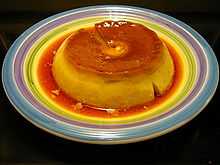

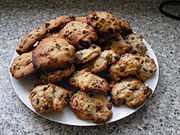

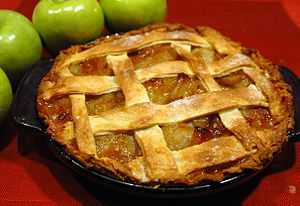
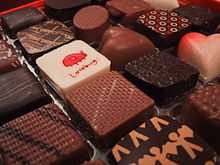


.jpg)

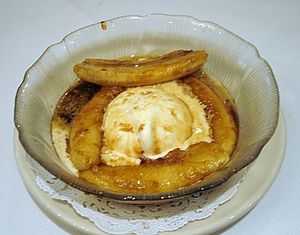
.jpg)
